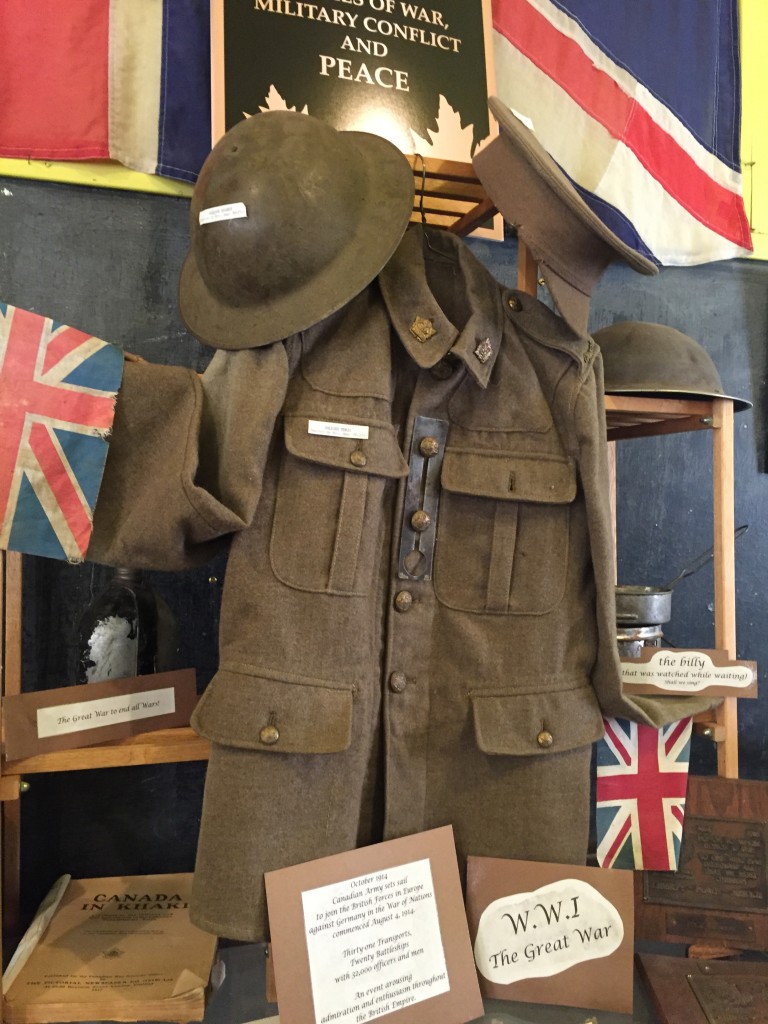Elbow, Saskatchewan—a funny name for a village, so named because it is on the “elbow” of the South Saskatchewan River. To get to Elbow, you have to turn off of the road to the village of Eyebrow, named for an eyebrow-shaped moraine on its outskirts.
I know about Elbow and Eyebrow because Elbow is my father’s family home. Earlier this month, my brother and I returned to Elbow for our first visit in many years.
One of the sites we took in was the Elbow Museum. The museum includes a sod house, built and furnished in the style of the pioneers, and two large rooms of artifacts donated by Elbow denizens. We were delighted to see many items from our family, including our great-uncle’s World War I uniform, pictured at the top of this post.
Our visit to the Elbow Museum impressed upon me just how engaging small museums may be. In fact, small museums are the most typical American museum: fully 57% of U.S. museums have three or fewer, and often no, professional staff. Some of these museums are the home of an author, artist, or other local notable and his housewares and works; others are preserved local institutions, such an old town mill; others, like the Elbow Museum, include items from many residents.
Of course, museums in small towns and villages confront many challenges. The museum’s artifacts are gifts of residents on hand to see how just prominently their gifts are displayed. Talk about donors who will be able to see if their intent in making a gift is honored!
Once in a while, there may be questions about whether someone had the authority to give a gift; as we toured the museum, our aunt pointed out a family chair that was the source of hurt feelings when one of our great-uncles donated it without consulting other family members.
And, small-town and village museums lack the resources to contextualize artifacts and prepare interpretive displays and special exhibits that help the collection rise above being simply a jumble from local attics.
But small-town museums have great advantages too. For one, they’re often more informal and family-friendly; many children will learn more from a small museum where they’re allowed to handle at least some items in the collection than from a big museum where the collection is mounted in display cases.
Even more, town and village museums are philanthropic ventures that connect people to a local place. They bring together citizens to tell the story of their community, or of some important aspect of its history—and thereby build connections that will sustain their community in days ahead. In that sense, the museum is as much for the residents as for out-of-town visitors. Small-town and village museums are exemplars of “philanthrolocalism.”
It was nice to see that Elbow, unlike some villages, is growing—in fact, a whole new subdivision is under construction (if it makes sense to think of a “subdivision” in a village of little more then 300 people!). Surely the philanthrolocalism on display in Elbow—notable not only in its museum but other local initiatives—is one reason why Elbow is thriving.






